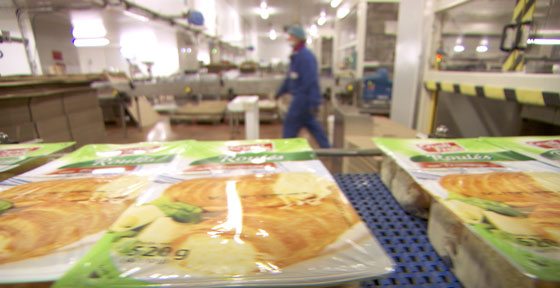There are three primary safety hazards in food manufacturing: biological, chemical and physical. Designing and implementing a Food Safety Management System can help mitigate these hazards and is a key component of the ISO 22000 certification. ISO 22000 is a quality certification from the ISO (International Organization for Standardization) that can be applied to any organization in the food chain. It is a food and beverage (F&B) specific derivative of ISO 9001.
The following outlines the three safety hazards and offers strategies for addressing these hazards in food manufacturing.
Biological Hazards
What are biological hazards? These hazards are caused by microorganisms like bacteria, viruses, parasites and mold, and are often associated with the failure of a process step.
How can manufacturers address biological hazards? Oil-free compressors do not generate biological hazards when used as intended and maintained as described in instruction manuals. Biological contaminants are reduced in quantity or removed entirely due to the sterilizing effect (when used in combination with the oil free compressor and connected adsorption dryer). It’s important to note that though compressed air passes through high temperatures in the compressor stages, the time is too short to ensure full sterilization.
Chemical Hazards
What are chemical hazards? Chemical hazards are substances that may not be found naturally in a product. For example, it could be a substance intentionally added to the plant or animal during growth or food processing.
How is Atlas Copco addressing chemical hazards through its manufacturing process? Atlas Copco’s production process, as well as our sub-suppliers, adapt to the need at hand. All products and systems that may contain chemicals are thoroughly inspected. The result of this investigation and adaption exercise is to ensure that no food safety risk is identified. Our process ensures that oil-free compressors and drying equipment will not create any chemical hazards when used as intended.
Physical Hazards
What are physical hazards? Physical hazards are substances that are not typically found in food and can potentially cause physical injury. For example, compressor equipment and related dryers could release particulates from the inner parts of components, in turn generating a physical hazard. However, in most cases, these releases are avoided.
What strategies exist to eliminate physical hazards? Physical hazards can be avoided by referring to the ISO 8573-1 standard for installing a downstream filtration system.
You may also be interested in the following articles:
- How clean is your compressed air?
- Don’t Overlook Compressed Air in Food and Packaging Automation
- How to Save 3,500 kWh Annually and Reduce Total Cost of Ownership
Source: Compressed Air Blog


